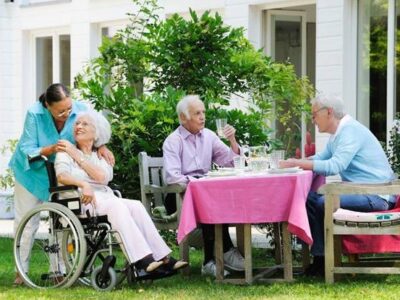Movement is essential for a child’s growth and learning. Movement learning is also called physical education or kinesthetic learning. It uses activities to help children learn by moving their bodies. This method combines physical movement with mental growth. It allows children to learn more effectively while staying healthy.
This guide explores how movement learning supports child development across different areas. These involve physical health, cognitive growth, emotional well-being, and social skills. For more on movement and learning, read on!
Physical Health and Fitness
Movement learning greatly benefits children’s physical health. When kids engage in activities, they strengthen their muscles and bones. For their expanding bodies, this is crucial.
These types of movement improve balance and coordination, which helps children develop physically. Kids who regularly take part in movement activities also have good posture. This may also include flexibility and physical endurance.
Exercise also helps prevent health problems. Children who stay active have a lower risk of issues like obesity. This can affect their health as they grow.
Regular physical activity helps regulate blood sugar. It also improves circulation and keeps the heart strong. Developing healthy activity habits early in life sets children up for better long-term health. Their likelihood of remaining active as they develop is higher.
Cognitive Growth and Brain Development
Movement learning isn’t just about physical health; it also supports brain growth. Physical activity stimulates brain development. It does so by increasing blood flow. It brings oxygen that helps the brain function well.
Activities like dancing or team sports help children develop focus and attention skills. Studies show that active children tend to do better in tasks that need concentration. This also includes memory and problem-solving.
Movement learning also builds important mental skills. For example, learning to catch a ball or ride a bike requires judgment. These activities encourage the brain to make quick calculations and adjustments. It strengthens thinking skills. By focusing more on kinesthetic learner characteristics, children learn to react, plan, and make faster decisions. It can benefit both their schoolwork and daily problem-solving.
Emotional and Mental Well-being
Movement learning has positive effects on children’s emotional health. Physical activities release “feel-good” chemicals called endorphins in the brain. These chemicals reduce stress, anxiety, and even mild depression. When children engage in physical activities, they often feel happier, more energized, and less stressed. Their mental health benefits from this.
Movement learning can also boost a child’s confidence and self-esteem. Achieving physical challenges gives children a sense of accomplishment. These small successes help them build confidence. It also encourages them to set and reach goals in the future. Feeling proud of their achievements helps raise their self-esteem. This advances social as well as intellectual success.
Social Skills and Teamwork
Movement in the classroom provides a great opportunity for children to develop social skills. Group activities allow children to interact, communicate, and cooperate with others. Working with teammates teaches kids social skills like communication, empathy, and respect. They learn to support others, celebrate together, and handle challenges as a team. This builds strong friendships.
Team activities also teach children the importance of teamwork and collaboration. Working toward a shared goal helps children see the rewards of cooperation. It also offers the satisfaction of being part of a group.
Learning to be both a team player and a supportive friend helps kids build relationships that benefit them in school and beyond. These social skills are key for their personal growth and help them form meaningful connections.
Improving Focus and Attention Span
Movement learning can also improve a child’s focus and attention span. Physical activities help kids learn to focus on specific tasks. Games like “Simon Says” or yoga poses need children to pay close attention and control their movements. This focus on activities can transfer to academic settings. It helps children concentrate better in class or while doing homework.
Additionally, physical activity helps children release extra energy. This can make it easier for them to settle down. They focus on quiet tasks when needed. Studies show that regular movement can improve attention. It can also reduce disruptive behaviors in school. Including movement learning in their routine may help children stay more focused.
Enhancing Creativity and Imagination
Movement learning encourages creativity and imagination. Activities like dance, role-playing, or simple exercises can be customized in fun, imaginative ways. When children create their dance moves or act out a story, they use their creativity and express themselves through movement. This freedom to express ideas helps develop creativity and builds confidence in their thoughts.
The creative movement also encourages children to think in new ways. For instance, a game where they pretend to be animals in a jungle allows them to explore new ideas and physical expressions. This activity stimulates the brain. It helps children build problem-solving skills as they imagine scenarios.
They may find creative ways to interact with their surroundings. Mix creativity with movement. This helps kids approach challenges with an open mind and positive attitude.
Building Resilience and Learning Perseverance
Movement learning teaches children about resilience and perseverance. Many physical skills, like catching a ball, swimming, or mastering a sport, take time to learn. These tasks require practice and patience. This teaches kids not to give up even when things are difficult. Working through these challenges helps children build resilience and determination.
Developing Motor Skills and Coordination
Movement learning is essential for developing motor skills and coordination. Fine motor skills, like writing or using scissors, are crucial for school tasks, while gross motor skills, like running and jumping, are key for physical development.
Activities requiring coordination, like balancing on one foot or bouncing a ball, help children refine motor skills, which are important in their daily activities.
Exploring Movement Learning
Movement learning offers many benefits for child development. It supports physical health and improves thinking skills. It also enhances emotional well-being and helps build social skills. Include movement activities in a child’s routine. In doing so, parents and educators can support well-rounded growth and learning.
Movement learning teaches children not only to stay active but also to build essential skills. For example, teamwork, perseverance, and creativity. As children grow, these skills help them become confident and capable individuals, ready to handle life’s challenges with strength and positivity.
For more topics aside from kinesthetic learning activities, visit our blog!
If you want morе еxciting contеnt visit. Globallyviz.com














Comments